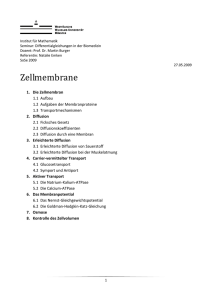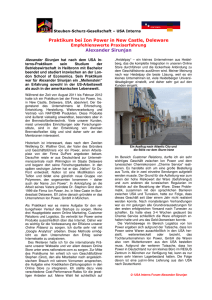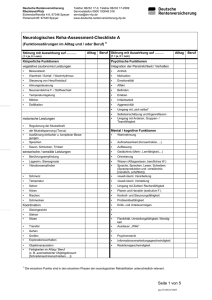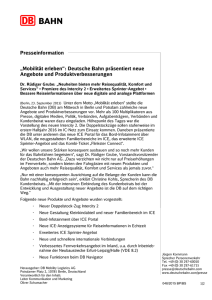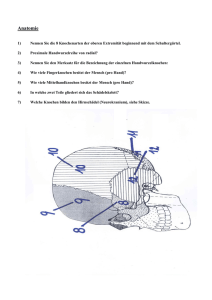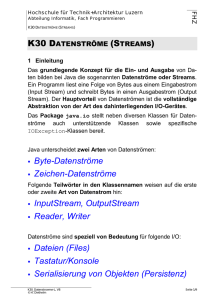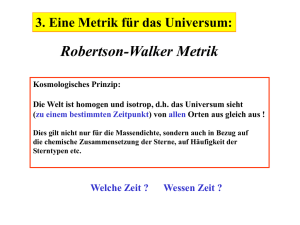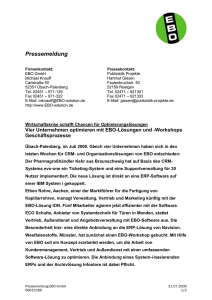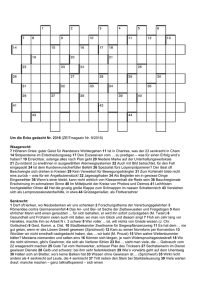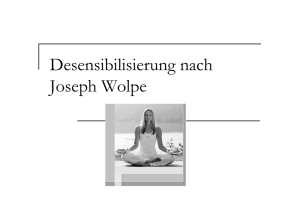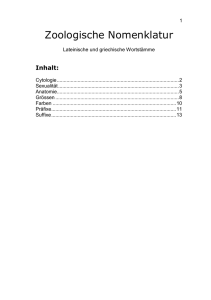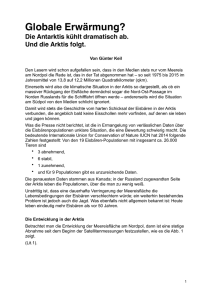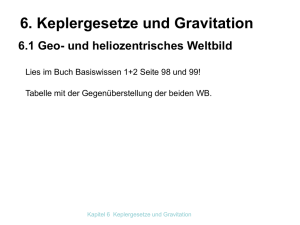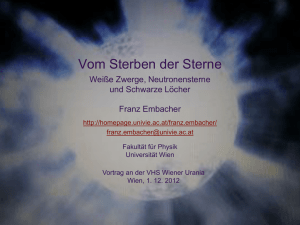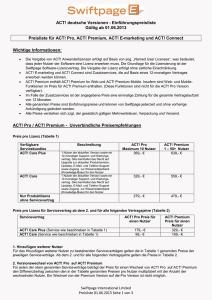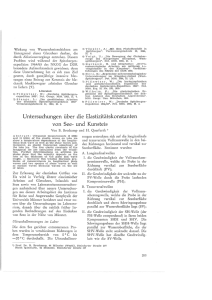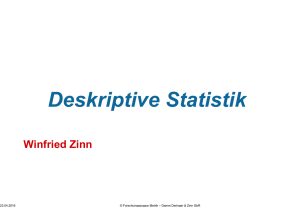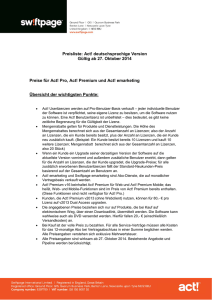Gravitation - Institut für Theoretische Physik der Universität Heidelberg
Werbung
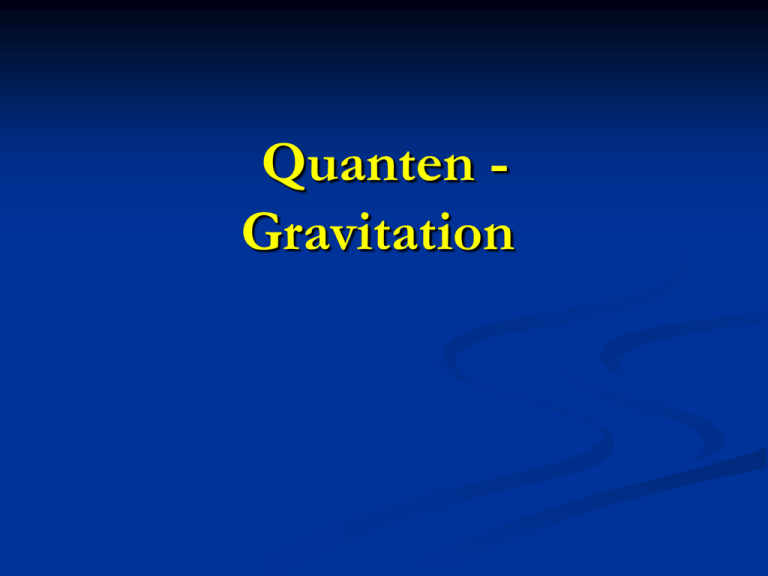
Quanten Gravitation Quantenmechanik und allgemeine Relativitätstheorie zwei Pfeiler im Gebäude der theoretischen Physik Passen sie zusammen ? Oder brauchen wir ganz neue theoretische Konzepte ? Quantenmechanik und allgemeine Relativitätstheorie QM GR Unbestimmtheit des Ortes Raum-Zeit Punkte Erhaltung der Information schwarzes Loch hat keine Haare WahrscheinlichkeitsAmplitude ( Wellenfunktion ) klassische Feldgleichungen Brauchen wir eine Wellenfunktion für ein schwarzes Loch ? Quanten-Gravitation Vereinheitlichung der fundamentalen Wechselwirkungen Braucht man Quantengravitation ? Gravitations - Gleichung Massives Teilchen ändert Geometrie der Umgebung Gravitations - Gleichung Einstein Tensor hängt ab von Metrik und ihren Ableitungen Energie-Impuls Tensor : Materie und Strahlung Newton Planck – Masse (reduzierte) Planck Masse experimentell nicht gerade gut zugänglich ... Metrik gμν bestimmt die Geometrie Energie - Impuls Tensor ist Quantenobjekt ρ : Energiedichte p : Druck Energiedichte ist Erwartungswert eines Quantenobjekts Wasserstoffatom : nicht punktförmig Quark-Gluon Plasma , Higgs Potential Braucht man Quanten-Gravitation ? Gravitations-Gleichung links : klassisches Gravitationsfeld , rechts Quantenmaterie ( Energie- Impuls – Tensor ist Quantenobjekt ) Kann man eine Gleichung haben , bei der links ein klassisches Feld und rechts ein Quantenobjekt steht ? Kann man eine Gleichung haben , bei der links ein klassisches Feld und rechts ein Quantenobjekt steht ? ja : Gleichung für Erwartungswerte ! Metrik und Einstein- Tensor sind Erwartungswerte von Quanten - Observablen Metrik und Einstein – Tensor sind Erwartungswerte von Quantenobjekten Feld Quanten – – Theorie der Gravitation Quantenfeldtheorie der Gravitation Quantenfelder : unendlich viele Freiheitsgrade zentrale Grössen : Erwartungswerte, Korrelationsfunktionen nicht : Wellenfunktion des Universums Es frägt auch niemand nach der Wellenfunktion des Higgs- Mechanismus … Objekte der Quantengravitation Erwartungswerte : Metrik ( ähnlich Higgs- Feld ) Korrelationsfunktion : wichtig für kosmische Hintergrundstrahlung (ähnlich Propagatoren in QFT ) Ähnlichkeit : Standardmodell der Elementarteilchenphysik (SM) und Gravitation (GR) SM GR Quantenfeldtheorie Feldgleichungen Effektive Wirkung exakte Feldgleichungen ( z.B. Maxwellgleichungen mit Quantenkorrekturen ) Wirkung kann als effektive Wirkung interpretiert werden Quantenmechanik und allgemeine Relativitaetstheorie QM GR Unbestimmtheit des Ortes Raum-Zeit Punkte Erhaltung der Information schwarzes Loch hat keine Haare WahrscheinlichkeitsAmplitude ( Wellenfunktion ) klassische Feldgleichungen Ähnlichkeit : Standardmodell der Elementarteilchenphysik (SM) und Gravitation (GR) SM lokale Eichsymmetrie GR Diffeomorphismen – Symmetrie ( Invarianz unter allgemeinen Koordinaten-Transformationen ) ist lokale Eichsymmetrie Kaluza-Klein : Eichsymmetrien des SM in d=4 aus Diffeomophismen in d> 4 ( Isometrien des inneren Raums ) Probleme einer Quantenfeldtheorie der Gravitation ( 1 ) keine Renormierbarkeit in Störungstheorie ( 2 ) kein ( regularisiertes ) Funktional - Integral bekannt ( vergleiche Gitter- Eichtheorie ) Probleme sind nicht konzeptioneller Natur ! Brauchen wir Superstrings ? ( 1 ) Endliche Theorie löst Problem der Renormierbarkeit ( 2 ) Kein Funktional - Integral , keine nicht - störungstheoretische Formulierung Grundzustandsproblem Es kann viele verschiedene Formen einer Quantenfeldtheorie der Gravitation geben Renormierbarkeit der Gravitation jenseits der Störungstheorie Asymptotische Sicherheit ( S.Weinberg , M. Reuter ) Funktionale Renormierung ( Flussgleichungen ) bietet Möglichkeit , nicht – störungstheoretisch renormierbare Theorien zu behandeln Renormierbarkeit = Existenz eines Ultraviolett – Fixpunktes im Fluss UV – Fixpunkt in Einstein - Gravitation Martin Reuter Quanten – Dilaton - Gravitation mit T. Henz , A. Rodigast, J. Pawlowski Effektive Wirkung am Fixpunkt , k=0 Trunkierung Quanten – Dilaton - Gravitation Kann Fixpunkt etabliert werden ? Regularisiertes Funktional - Integral Gitterformulierung Symmetrien sind entscheidend ( Diffeomorphismus Symmetrie ) Freiheitsgrade weniger wichtig Metrik, Vierbein , Spinoren , Dreiecke , konforme Felder… Graviton , Metrik : kollektive Objekte in Theorie mit Diffeomorphismus Symmetrie Skalare Gravitation in d=2 mit D.Sexty Quantenfeldtheorie für Skalar d=2 , zwei komplexe Felder i=1,2 nichtlineares sigma-Modell Diffeomorphismus-Symmetrie der Wirkung keine Metrik ! Gitter Regularisierung klassisch statistisches System, ähnlich Festkörper of the conjugation K 1 x µ ( z˜ ) = x µ ( z˜ ) + ξ µ ( z˜ ), (256) H ( x˜ ) − H 1 ( x˜ 1 ) H 2 ( x˜ 7 ) − H 2 ( x˜ 2 ) symmetric wit h respect to global SO(3)-rotations t h t he t ransformation V1 = (− 1, 0, 0, 0) , V5 = (0, 0, 0, 1) 1 8 between and ask how t he act ion depends on t he assignment of pox˜ 1 ) H 1 ( x˜ 7 ) − H 1 ( x˜ 2 ) 8 ) − H 2 (funconthe changes sign under three components provided sit ions. More precisely, H de- (0,replace Vsince = ,we (0,use − a1,fixed 0, 0)manifold , V6 we = 0, 1, 0) − H 2 ( x˜the 2k Position der Gitterpunkte spielt keine Rolle . (257) scribed by t he coordinat es x µ , we want t o know how L¯( y˜ ), fields H 1,2 would be sufficient and H 3 could V3 =fields (0, 0, 1,t ice 0) derivat , V7ives, = (0, (Act 1, a0,ually, 0) two expressed in t erms of average and−lat be linear combinat ion of t hem.µWe keep here an indepenS in eq. (33) in terms µ depends on ξ ( z˜ ). If L¯( y˜ ) is found t o be independent of dent H for t he sake of analogy wit h our set t ing of spinor 3 = (0, 0, 0, − 1) , 01 V8. =In (1, 0, 0,10 0), (122) 4 diffeomorphism ξ µ ( z˜ ) t he act ion is lat tV ice invariant ges sign under the new j gravity.) t his case t he part icular posit ioning of lat t ice point s plays To each posit ion x˜ j ( y˜ ) wit hin a cell a latµt ice point z˜ j ϕ 2+ → (ϕ 2+ ) ∗ , (ξ−2 ) → no role for t he form of t he act ion in t erms of average fields by eq. and (121), and t o every z˜ j we associatµe and we indicat e the posit ions x˜ j in t heiszj0associat − z1edplane y. Wit h respectkt o the and lat t ice derivat ives. Lat t ice diffeomorphism invariance p j ive not at ion a posit ion x( z˜ j ) on t he manifold. In an int uit 2 3 t he z − z plane, respect ively in Fig. 1. T he dist ance is a property of a part icular class of lat t ice act ions and will wski act ion SM = inot S be realized for some arbit rary lat t ice act ion. For exam- we will denot e t hese four posit ions by x 1 , x 2 , x 7 , x 8 . As depict ed in fig. 2 t hese posit ions are at (almost ) arbit rary erefore hermit ean. We ple, t he st andard Wilson act ion for lat t ice gauge t heories point s3in t he plane. 1 k j t o establish t hat S isisnot lat t ice diffeomorphism invariant . T he cont inuum limit of a lat t ice diffeomorphism invarix + 7 ebra (wit h Grassmann ant act ion for spinor gravitykis rat her st raight forward. Lat k 1 2 4 3 t ice derivat ives are replaced7 by ordinary derivat ives. T he x8 ct ure based on K 5 can 5 µ independence on t he posit ioning of t he variables ϕ(x) reSM , which is related p sult s in t he independence of t he cont inuum act ion S = ¯ 6 L (x) on t he1variable change ϕ(x)8 → ϕ(x − ξ) = ϕ(x)3− x ξ µ ∂ µ ϕ(x). T his amount s t o diffeomorphism symmet ry of 2 0 inuum diffeot he cont inuum act ion. Indeed, in t he cont x1 morphisms can be formulat ed as a genuine symmet ry corresponding t o a map in t he space of variables. T his is due T I ON x2 t o t he fact t hat for any given point x t here will be some 2 variable, originally locat ed at x − ξ, which will 2 be moved t o 4 FIG. 2: Posit ions of variables in a cell t his posit ion by t he change of t he posit ioning (256). T his ularized version of the property is only realized in t he cont inuum. For a lat t ice poseµ we will use a lattypically no variable will be posit ioned precisely at x afT he volume V ( y˜ ) associat ed t o t he cell corresponds t o p t er t he change of posit ions (256), if before a variable was t he surfacecorresponds enclosed by t he solid lines in fig. 2. It is given FIG. 1: Posit ions of x ˜ . T he cent er of t he squares j t hat t he action (33) is locat ed t here. by t o y˜ . ) transformat ions andWe emphasize t hat we employ here a fixed “ coordinat e 1 2 manifold” for t he coordinat es x µ . µ No met ric µ is int roduced ν νV ( y˜ ) = 2 |(x 08 − x 01 )(x 17 − x 12 ) − (x 18 − x 11 )(x 07 − x 02 )| gularizat ion will t hereat t his st age. Physicalµdist to ν ances4 do not correspond 2 = 1 (x µ − x µ )(x ν − x ν ). 1 √ 3will Minkowski and a eu(258) cart esian dist ances on t he coordinat e manifold. T hey µν 7 2 y ˜ 2 in8 t he1 neighboring ˜ jfunct is ions,2,asand each point rat her bebetween induced bytwo appropriat e correlat ionx For t he part icular case x µ = z˜ µ ∆ t his yields describedcell in general t erm by “ geomet ry from general st at is-is further has six nearest neighbors. T here an “ opposit e t ics” [15]. T he appropriat e met ric for t he comput at ion of x 08 − x 01 = 2∆ , x 18 − x 11 = 0 , x 17 − x 12 = 2∆ , x 07 − x 02 = 0, point ” at distance 2, wit h pairs e point s given by infinit esimal physical dist ances swill be associat ed of t o opposit t he (259) nal hypercubic latt ice expect at ion field. and t herefore V ( y˜ ) = 2∆ 2 . For simplicity we rest rict t he ( x˜ 1value , x˜ 8 ),of(ax˜ suit ˜able ( x˜ 3 , x˜ive ( x˜ 4 , x˜ 5 ). 2, x 7 ), collect 6 ), ish between the “ even discussion t o deformat ions from t his simple case where Lagrangian L (iy˜ant ) isact given a sum ofµ “ hyperloops” . µ 2. L at t i ceTdihe ffeom or phi sm i nvar i on i nby t wo ν ν µ µ ˜ ) > 0. µ ν (x 8 − x 1 )(x 7 − x 2 ) remains posit ive, i.e. V ( y int eger, Σ µ y˜ even, di m ensiA onshyperloop is a product of an even number of Grassmann We also assume t hat in t he course of such deformat ions ∆ , z˜ µ int eger, Σ µ z˜ µT he latvariables t ice act ion (253), (131) is lat t ice diffeomorphism no posit ion ever crosses any boundary line of t he surface located posit ions ˜under˜ ) wit hin t he cell at y˜ . j (y . T he basic const ruct ionatprinciple can bex between two ot her posit ions. ed as t he fundamentinvariant al st ood in In two accordance dimensions. T hewit concept of lat(2) t ice diffeomorh eq. we will consider hyperloops t ional measure (3) by the standard SO(3)-invariant meawit hto unbounded = − = fields, 1 and e.g. x short hands for t he p sure for every z˜ . A generalization − ∞ < H ( z˜ ) < ∞ , is more problemat of cell they˜unof t he sitic esbecause x˜ of t he , i.e. x = x z˜ x˜ j ( y˜ ) boundedness of the act ion (6)volume even for a finit e number of corresponds t o t he surface inclosed by st rai lat tice sit es. A further generation uses fields H s x˜ ( y˜ ) of t he cell in t z joining t hecomplex fourz lat t ice point wit h constraint H ( z˜ )H~x ( z˜ ) x= able SU(3)-we rest rict t he discu ˜ ,1. x˜ , For x˜ , x˜a. suit For simplicity ~ x invariant measure the Daction and partit ion in- lat t ice, x = z˜ µ ∆ “ deformat ions” of~ t he are regular D function ~ ~ x x V (y x of thealways variant under unit~xary t ransformations group SU(3). ˜ ) remains posit ive and t he pat h of on z never D andduring D on ion zwe concentrate T he action (5), (6) is real real α. t ouches anot her po t he deformat st raight line between two otof her point s at t he boun We now proceed to~x an (almost) arbit rary posit ioning ~ xWe use posit t he volume t he lat tice points on a piece oft he surface. by specifying ions V ( y˜ ) for t he defin intaegral over t he region of t he manifol x ( z˜ ). This associates t o eachan cell “ volume” V (relevant y˜ ), 1 V ( y˜ ) = 2 (x − x )(x − x ), d x (7) = V ( y˜ ), where we define the region by t he surface covered cells appearing in t he sum. We next express t he act ion (5), (6) in t erms of fields in t he cell Kollektive Metrik Metrik des flachen Minkowski Raums Korrelationsfunktion der Metrik Gravitationspotenzial eines Punktteilchens Massives Teilchen ändert Geometrie der Umgebung Gibt es Modell dieses Typs in vier Dimensionen , mit Lorentz – Symmetrie im Kontinuumslimit ? Diffeomorphismus – Symmetrie der effektiven Wirkung ? Universalität der Geometrie Verschiedene mögliche Definitionen von Metrik – Observablen Welche nehmen ? Ein Beobachter misst eine Kugel , der andere eine Birne ? Universalität der Geometrie Für grosse Längen verglichen mit Planck-Länge : verschiedene Metriken sind proportional zueinander Universelle Geometrie , bis auf Einheiten In der Nähe der Planck-Länge : Universalität bricht zusammen – Raum und Zeit verschwinden im Nebel der Fluktuationen Gibt es beobachtbare Konsequenzen der Quantengravitation ? Korrekturen zur Einstein - Hilbert - Wirkung Neue Felder ? Gravitations - Gleichung Ist Einstein - Hilbert Wirkung ausreichend ? Dies kann nicht die exakte effektive Wirkung einer Theorie der Quantengravitation sein ! Ist es eine ausreichend genaue Näherung für die effektive Wirkung ? Antwort für diese Frage braucht konsistente Theorie der Quanten Gravitation ! Einstein - Gravitation als effektive Theorie für grosse Abstände oder kleine Impulse Diffeomorphismen - Symmetrie Entwicklung nach Ableitungen keine Ableitung : kosmologische Konstante zwei Ableitungen : Krümmungs - Skalar R vier Ableitungen : R2, zwei weitere Tensor - Strukturen Man erwartet höhere Ableitungen , die durch Quanten – Fluktuationen induziert werden. Aber bei erreichbaren Energien nur winzige Korrekturen Modifikationen bei kleinen Abständen Korrekturen zu den Einstein – Gleichungen können eine wchtige Rolle spielen für R ~ M2 Singularität der schwarzen Löcher, inflationäres Universum Neue Felder ? Photon als Konsequenz der Vereinheitlichung von Elektrizität und Magnetismus Higgs Boson als Resultat der Vereinheitlichung von elektromagnetischer und schwacher Wechselwirkung Kosmon als Resultat der Vereinheitlichung von Standard-Modell und Gravitation ? Dynamische Dunkle Energie UV Fixpunkt : addiere beliebige kosmologische Konstante oder Massenterm χ2 Dynamische Dunkle Energie Quintessenz : neue fundamentale Wechselwirkung Starke,elektromagnetische,schwache Wechselwirkung Auf astronomischen Skalen: Graviton + Gravitation Kosmodynamik Kosmon Es gibt schon noch dicke Bretter zu bohren in diesem Haus ! end
